A sales page, a lead page, or a landing page – these are all just words describing the same thing. That same thing is a page that gives your ideal person who is out there looking for your information about your thing.
Whether your thing is an e-course, an e-book, a package, a webinar, or anything that you want someone to exchange their email address or some money for – that’s a sales page. Your sales page is there so that you can convey information and the feeling of what it’s like for that person to own the thing that you’re selling.
I am currently in the midst of creating another course and am right now focusing in on what’s going to be on the sales page. A good sales page is important because you could create the best course in the world, but if nobody buys it, it sucks!
A couple of years ago, I created the best course in the world (I thought). It was my first course and I spent thousands of dollars on videographers, and a website, etc. I spent all this money creating this course and then I didn’t spend any money on marketing it. I didn’t even share the sales page, let alone really think about what I needed to put in the sales page. So as you can image, I didn’t sell any.
The next time that I created a webinar, I followed through and spent the time that I really needed to get across what the actual webinar was about. How it would actually make the person feel, how it would change how they do things, and how it would solve their problem.
It is much more effective to give those types of benefits and have a natural kind of conversation rather than trying to sell based on facts and figures. Talking about the length or topic of the webinar, how much it costs, etc. isn’t going to give you the same kind of traction.
Today I’m going to go through the top 10 things that you can put on your sales page to help it get the traction you need and help get people clicking the buy button.
In my last post, we talked about mental triggers, the way people think, and how to motivate people to change. If you haven’t checked it out, take a look here.
You may not realise how used to reading sales pages you actually are. You read sales pages all the time. If you’ve ever booked to go to an event on the internet, purchased an online course, or bought an ebook, you’ve read a sales page.
A sales page creates mental triggers for people so that they realise that they have the problem you are solving.
A Powerful Hook
You want to make sure that your title is going to hook into people’s brains. It needs to capture their attention and immediately identify whether they are the person you’re talking to or not.
Create a hook that will be noticed by your ideal client, the person that you want to join your program, workshop, or retreat, buy your ebook, or whatever it happens to be.
If you need to work on nailing down your ideal client, take a look at my article about honing in on your niche and download the free Ideal Client worksheet there.
Fear
The first hook you want to create is your ideal client’s biggest fear.
For example, for one of my old programs I called the fear hook “Psycho Mum / Fun Mum.” My Ideal Client would resonate with that and totally identify as a psycho mom but know they she doesn’t want to be psycho-mum anymore, she wants to go back to being fun-mum.
It really depends on who your target market is as to what your hook will be, but try using that two sides of the coin where one is the biggest fear and the other is the aspirational goal. You want them to look forward to what they will get from your thing.
So that first hook will be your title. People are 70 per cent more likely to shift, change, and move on something if they are motivated by the fear of that happening versus only 30 per cent if they are just inspired by it but don’t have the urgency created by the fear.
You’ll notice when you’re looking at things you’ll be more motivated by the fear factor or scare factor than you actually will by the things that inspire you. Even though I am an optimistic person, I’ve seen it time and time again. There’s also some really good statistical data to support that.
Meet Them Where They Are
Next, you have to meet the person where they’re at now.
You know how when you are with a client in your clinic, and you look through their intake form and say something like, “Okay, today is about weight loss and getting your skin clear.” Or whatever their main issue is at the time? That’s the same thing you are going to do with your sales page.
You are going to meet them where they are, currently, and really knuckle down on what it feels like to be stuck where they are. You want to help them clearly identify exactly what pain their body (or mindset or whatever applies to your thing) is going through.
Writing out your sales page is just like sitting with your ideal client. For example, if we’re talking about diabetes, you might be saying something like this to your client:
“So it seems that you’ve tried to stop this before. It seems you’ve been going to the doctor for a long time and you know enough that you’ve got a sequence of hba1c results and you’ve got a sequence of glucose results that are obviously steering in the wrong direction.”
Or maybe it’s more like this:
“You’ve tried to lose that weight but it hasn’t worked before because you need some accountability and you don’t have any support in your household (they’re all drinking coca-cola and eating cheesecake). You’ve tried this before, this is where you’re at, you are exhausted, you are tired, you are worried about your weight, you’re worried this won’t change.”
Truly get into their shoes and describe the pain they are feeling.
I know it’s hard for us optimistic, positive types of people – we want everything to be beautiful, happy, la-la, unicorns and rainbows. Don’t worry – we’ll get to that.
But first, you’ve really got to let people understand that the thing they are living with, the pain they are living with is real and you acknowledge it, understand it, and show them that there is another way.
The Ideal
So you’ve identified their fear and acknowledged their pain. Now you are going to describe the ideal – how their situation will be better after they get your thing.
Again, if you are diving deep into your target market, you’ll know that there are some nuances around the ideal. People don’t just want to be happy and healthy even though that’s very nice. You know, we scroll Instagram and go oh happy, healthy, happy, healthy, happy, healthy, inspirational quote – those types of things don’t necessarily motivate us to change. That’s just going to kind of disappear in a sea of stuff.
So your ideal is more about imagining what your customer’s life could be like a couple of months after this program. For instance:
“Imagine a time when you don’t have to wake up six times a night in a ball of sweat. Imagine running around with your kids and not being puffed out. Imagine what it feels like to have a clear head, that you have the possibility of winning worker of the month at business.”
It really depends on who your target market is, but you want to imagine their aspiration, not the one you have for them.
As practitioners, we want to talk about how a person with type-2 diabetes or in a pre-diabetic state could imagine never having to worry about the possibility of hypertension again. We might talk about how they’ve decreased their risk of cardiovascular disease. But that’s practitioner-speak.
Instead, you want to get into their shoes and imagine what they would actually like. You want to paint a picture of what the ideal looks like in terms that resonate with them.
Make sure that it is specific to those particular people who are interested in your thing. Your thing might be great for everybody, but there’s still going to be that particular, perfect person who would just lap it up. They’re going to be the rock star and do the things you ask them to do and are going to have the changes that you know they can achieve.
Those are the ones that you want to talk to on your sales page. Not just to everyone, because you can’t stand out in a sea of ‘I want to help everybody.’ You need to be really specific with the things that are going on for your particular ideal client.
Why Will This Work?
This is where you show how this program has worked for others, which tells the reader that it will work for them, too.
I recommend case studies for this, which is different from a testimonial.
A case study outlines X, Y, Zed for one particular person and their particular results (make sure you always include an asterisk specifically saying “results are not typical,” because we can’t guarantee those results for everyone).
When you give a case study of a person who has gone through your process, or has applied some of the things in your ebook, or who has heard you speak, and what they got out of it – their gold nugget – then someone can identify in themselves why it might work for them, as well.
For instance, “Oh, I’m a female who is the main breadwinner of the household, is very stressed and has kids. And so is this person in this case study, so maybe it’ll work for me, too.”
It’s really important to nail the Why This Will Work section. I think a case study is the best way to do that because you’re not giving a generalised statement for everybody (which we’re not allowed to say, especially in the health zone because it’s in that grey area).
Statistics
This is very similar to the last section, but it’s statistics, instead.
Some of us have a brain that looks for the visual first. Visual people are really quick and that’s why PowerPoint presentations work so well with them, because they can see it and process that information quickly. When you are describing that Ideal, back at step number three, you’re talking to the visual people. You’re painting a picture for them.
Now, at step number five, we’re talking to the Auditory people. The Auditory people weren’t listening, except for the heading. They were hooked from what you said. They got hooked from that first piece of information because they heard what it’s like for them.
Down at number five, we want to hit them hard with something that’s impactful. Using statistics can be very impactful. For instance, “Did you know this amount of people are affected by endometriosis? Did you know that every day this amount of people are diagnosed with such-and-such? Did you know that chronic disease kills this many people?”
Whatever it happens to be around your topic, you need a statistic. Statistics can be found everywhere. The Bureau of Statistics has a lot of information, the World Health Organisation also has a lot of information around statistics.
So go find some statistics that will stand out on your sales page that will hook those people who are listening for those little gold nuggets of numbers and information rather than the feeling. They are Auditory learners and are looking for that hook.
Benefits Not Facts
This is the juiciest bit! This is a really important bit. I’ve seen this time and time again on sales pages that fail, sales pages that don’t sell anything.
It’s the little discrepancy between facts and benefits.
The vast majority of us as practitioners and learners and students are dot-point extraordinaires and we want the facts.
- “It’s ninety minutes.” The facts.
- “It’s recorded.” The facts.
- “It’s a PDF download that is six pages long.” The facts.
- “You will learn about this condition.” The facts.
- “At the end of it, you will get 6 accreditation points.” The facts.
Right?
Those things are content. The context that you put them in is very different.
The context is something that will sell and convert the content. You all have a huge amount of extraordinary, very up-to-date and amazing information that is experientially being used with so many of your clients. It’s the most up-to-date information. The content is going to be gold. You’re doing your best to create the best information, so you’ve got that covered.
But the context you put it in for somebody to digest that information, that’s the bit we’re not good at. This is the bit that marketers are extraordinary at. So the big thing here is, how can you take those facts and put them into the context of how they are useful and beneficial for the person that’s about to see it.
For example, 90 minutes equals short, concise, to the point. Everybody is time poor. We want to know if we can do it faster, quicker, easier and cheaper.
So if you’ve created an e-course on a health condition that you’ve spent four years researching, learning about, and/or experiencing, you are saving your clients from having to spend that four years to find all that information somewhere else.
How are you going to make it cheaper? In actual fact, e-courses, e-books and anything online is generally less expensive than visiting a practitioner for an extended period of time.
Easier? That depends on how you’ve created it, but if all they have to do is listen to an audio while they’re doing their washing up, or watch a video, then you’ve made it much easier than having to read a thick textbook.
That’s the information you need to relay. Try these formulas to show benefits instead of facts:
- Downloadable PDF is six amazing pages of easily digestible information that’s available to you at any time with a super-easy checklist
- Receive accountability through our group of like-minded people on this same journey so you don’t have to depend on you partner who is not on this journey with you.
Formula = You’ll leave with X so you can Y:
- You’ll leave with an amazing checklist so that you can easily get the information on the front of your fridge whenever you need it.
- You’ll leave with six hours of incredibly useful content about the thyroid that you’ve never heard before so that you can be empowered to speak to your doctor next time about your tests.
Formula = The best way to X even if Y:
- The best way to decrease your hba1c even if you it’s never happened for you before.
- The best way to get a glucose result less than 5.5 even if you don’t want to exercise.
Formula = The best way to X even if you don’t have Y:
- The best way to lose 5 kilos even if you don’t have time.
- The best way to cleanse even if you don’t have a juicer.
- The best way to get your thyroid test results in a normal range even if you don’t have money.
Formula = How to X so that you never have to Y:
- How to clean your house so that you never have to dust again.
- How to get rid of mold so that you never have to worry about mold-related conditions again.
So can you see how these are benefit driven and work off of the things that people are really worried about? Again, you have to stand into the shoes of your ideal client.
Bonuses
Now it’s time to add the bonuses! Bonuses are so that people take action straight away.
You might have done this – I’ve definitely done it – and I’ve seen it time and time again. People want to change, they’re motivated, they get it, and they really want your thing. But then they go, “Oh, I’ll do that next week.”
It’s just like this personal trainer I’ve been thinking about getting since the beginning of the year. I’ve been thinking about it since January but I haven’t done anything about it until two weeks ago, when I finally contacted five different personal trainers. It was just so easy for me to go “next week.” I was motivated to change, but it just wasn’t enough to get me across the line.
Now that I’ve contacted five personal trainers, three of them got back to me and of those three, two of them sent me a quote. The third one sent me a quote with a bonus massage and a bonus yin yoga class, as well. And suddenly, I was “Oh, okay. I’ll do that now because there’s a bonus.” It was a reason for me to pull the trigger.
Some ideas for you – whatever aligns with you and your business:
- A tea bag with your details on it
- A 10% off voucher for products they buy from you
- A buy one, get one free voucher
- A downloadable e-book
- A bonus PDF checklist
- A self-assessment questionnaire
Whatever it is, it should be a bonus specifically for people who sign up right now, so that they are motivated to actually do it now so they don’t get six months down the track like I am right now (imagine if I’d actually done something back in January? I probably would have fit it into that dress I’ve gotta wear!).
The bonus has come right after the benefits. The benefits are making people think about how they can can do it even though they don’t have any time, they can do it even though they don’t have the energy, they can do it even though it hasn’t worked before.
Facts
This is where you put the facts. Facts are still important, they just don’t convert very well (there’s a lot of marketing data on this). So you want to put all the benefits and bonuses first. Then follow up with the actual details about the thing.
Create a heading like “Here’s How It works” and put in all your details.
Such as:
So, here’s how it works. It’s a six-week program with six weeks of content. There’s a recorded webinar that will be available to you until December 2019. You’ll get a 30 minute free consultation with me. We’ll have a phone call every week. You have $500 worth of product. You have access to a secret Facebook group and there will be weekly emails in your inbox.
Yep, those are all facts. None of that says benefit. Those are the facts so that’s way down here near the bottom.
If You Tried This On Your Own
Then we’ve got a statement about the cost if they tried to do this on their own. It doesn’t necessarily mean money.
”If you tried this on your own it could cost up to $100,000,” which is what I spent on my university degrees to get this information in the first place. This one is money. Here are some other examples:
If you did this on your own:
- it could cost you energy
- it could cost you time (to figure it out on your own)
- it could cost you your health because you’re getting information that isn’t in alignment, it might be people who are unqualified giving you this information
So you want to tell them about what it’s going to cost them if they fumble around and try to figure it out for themselves.
If I just think about my adrenal fatigue clients, they had been trying by themselves for three years prior to coming and seeing me. A lot of them had been tired for years, exhausted for years. They’d been trying to quit sugar, trying CrossFit, and not losing weight. They’d been trying detoxes and things like that, but their cortisol levels were so flat that if they were doing it by themselves it would literally cost them years, more of their health, and more of their energy.
Whereas I knew ways that could work within about 12 weeks.
Be really clear about what it’s going to cost them. Not because you’re you’re coming from the intention of wanting to sell stuff, but because it is actually going to cost them that if they don’t do something about the situation.
You’ve got to clearly state that underneath the facts because after they read what they’re going to receive, they are going to come up with objections as to why they can’t make the change now. One of those is it’s going to be the cost.
Frequently Asked Questions (aka overcoming objections)
Often, you’ve got to overcome objections straight away. They are looking at your page because they are interested in changing something about themselves, but things are going to come up that are internal dialogues they’ve had for a long time. So you’ve got to overcome that straightaway.
I’ve talked about this on my packages and programs video. Many times, objections about money can be overcome by having payment programs. There are also some really cool new options out there now like Afterpay, which can be used for products or services. You can also use EasyDebit. You can offer straight subscriptions with Stripe. You can also use PayPal subscriptions if you’ve got a business PayPal account. So there are ways that you can overcome the objection of money by breaking it down and making it easier for people to pay.
If it’s a time objection, make sure that your things are recorded and available to them at any point in time. If it hasn’t worked for them before because of a lack of accountability, make sure there’s a group available for them to be able to get the support that they need. If it’s an ease thing, make sure that your things aren’t just a written transcript that people have to read. Make sure they’re available in video or audio so that different people can access that information with ease.
This is why it’s so important to know your ideal client because those objections are going to come up straight away.
Unlike Other Programs
Finally, you need to add a headline along the lines of, “Unlike Other Programs.”
I don’t use this one a lot because I like the idea of running my own race, staying in my own lane, and not actually looking at what other people are doing. Comparisonitis can hit the best of us and if you are running in your own lane you don’t have to worry about what other programs do or don’t do.
But if you’re already noticing other products, books, e-courses, programs, or workshops around the same topic that you have created your thing about, then notice the things that aren’t available in those things and state them here.
For example:
- unlike other programs we have a support group especially made because we know that you are more likely to follow through with decreasing your sugar if you’ve got other people around you, especially if the people in your family aren’t supporting you and they’re still eating rubbish all the time
- unlike other programs, we have 30-minute consultation so it’s individualised
Call To Action
A call to action is a powerful moment. This is where you put your Buy Now button. This is where they can choose to change their life. Choose change.
It needs to be a really obvious button and underneath it will be your terms and conditions.
If you’re selling an online product to the European Union, you’ve got to have a little check box that people acknowledge they have read your terms and conditions. In Australia we just have to have the terms and conditions available and make sure that they’re right there. So you need a hyperlink specifically with your terms and conditions underneath it.
Your terms and conditions should include all details, such as:
- if you go out of business
- if you happen to pass away
- if your server goes down
- if they don’t end up paying all of the payments
- if they don’t end up utilising the services
- how long they’ve got before they can get a refund (if a refund is available)
- and more
See my post on legals for more information.
Your call to action is a powerful message to invite people to click now. Your call to action also enables them to get the bonuses. You’ve got to make sure that you’re reminding people that if they buy now, they get the additional opportunity that might not be available later.
Recap
So that’s it! Ten tips to create a great sales page
- Powerful hook
- Meet them where they’re at
- Their ideal life
- Why this will work
- Statistics
- Benefits
- Bonuses
- If you tried this on your own
- FAQs (aka objections)
- Call to action
- Bonus (I love a surprise) – Share it in 10 places
Your little bonus is – you can make the most beautiful sales page in all the world, that is spot on for your target market, but if your target market doesn’t see it, you’re not gonna sell any. So don’t hide that sales page.
You need to share it in ten places. Yes, it’s a challenge. Yes, you’ll freak out. Yes, it’ll bring up all sorts of stuff. But in the end, all you’re doing is sharing a page. It’s not the end of the world, no one has to click on it. You just have to offer it up, let somebody know about it and even if it’s not for them they might have the chance to tell somebody else about it.
Share it in ten places and then see what happens. Here are some ideas for those 10 places:
- Facebook groups
- Your Facebook page
- In person
- The back of your business card
- At your next BNI meeting
- Through a newsletter
- Through a pamphlet they
- On Twitter
- On Instagram
- On Pinterest
It could be anywhere! But share it. Don’t hide and keep this to yourself. You created this thing in the first place to help more people and the more people who see it means more chances to help more people.
Challenge
As usual, my challenge to you guys is to find something to take action on today. What are you offering the world or what do you want to offer?
If you’re inspired by this conversation and you want to create something, go and have a little practice. It can be short – if you’re an in full inspiration mode, it can take as little as half an hour to write a sales page. Then you get into the flow of it, you get in the practice.
At first, it’s gonna feel different because it is different. We aren’t taught marketing as practitioners. But if you get used to talking in a way that is benefit-driven rather than content and fact driven, then you’re going to start to create conversations through your website, through social media, and other places that are motivating for people to change or to click on your next thing.
If you already have something created, go to your sales page right now and do one thing that you heard today. Change that one thing and see what difference it makes.
Share This!
If you got something out of this and you know somebody else who might get something out of this too or is who is in need of this information, please share it because the more people that we can help the more practitioners that can actually get a message out in a way that is going to change people’s minds about their health and well-being and actually take action. They can and learn the thing they need or do the e-course, the workshop, or the webinar so they can actually make a change.
We can create change for the rest of the planet with their health and it can be through you or through the person you know that you share this with. So share, take the challenge and see what happens!


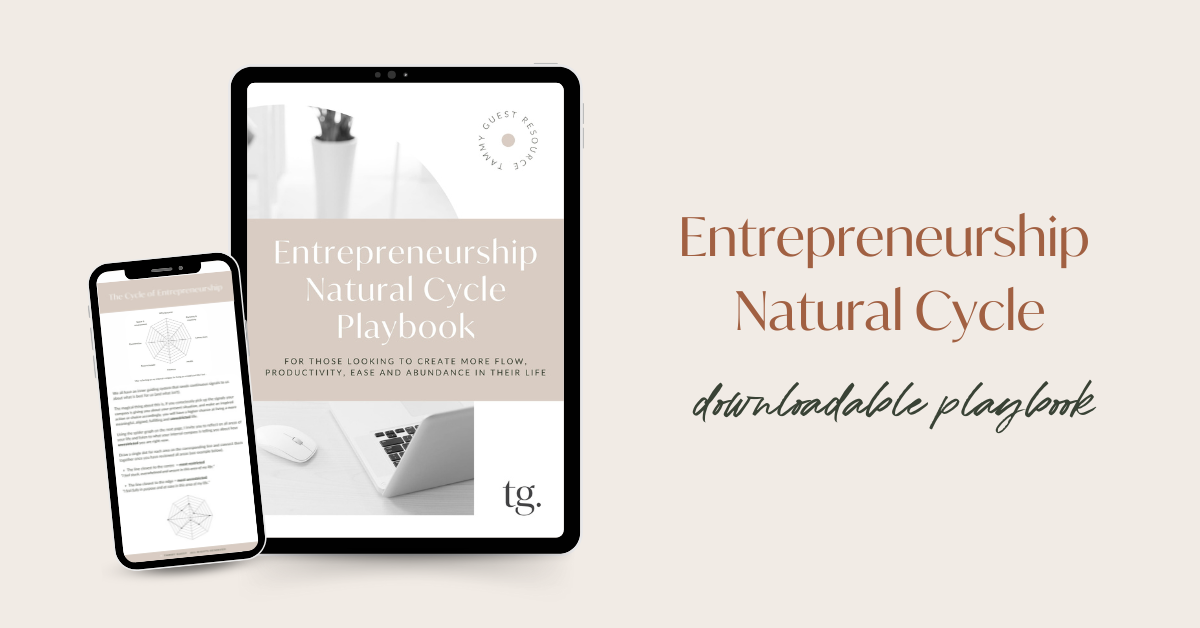
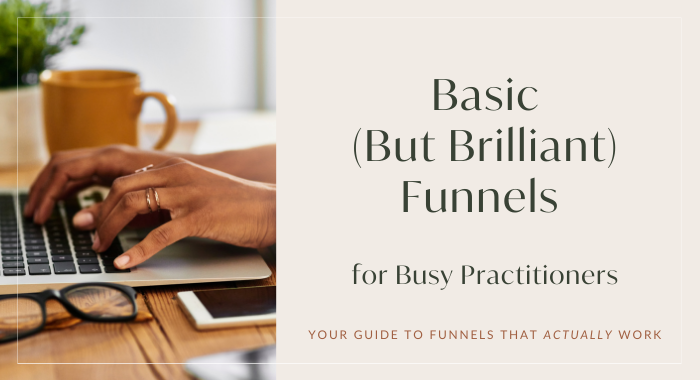


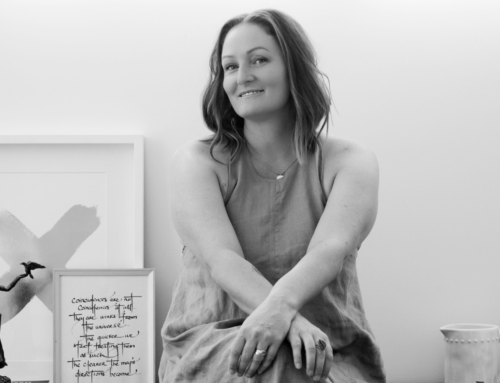
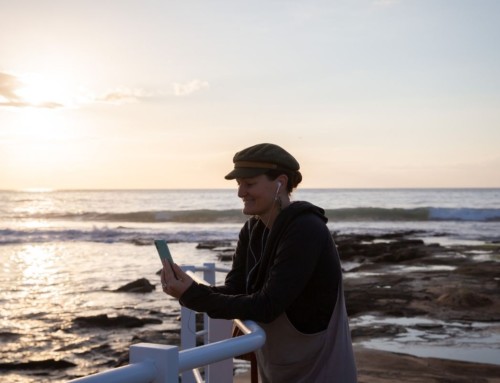

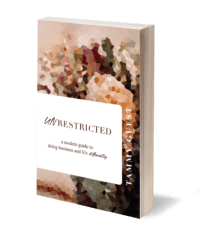
Leave A Comment